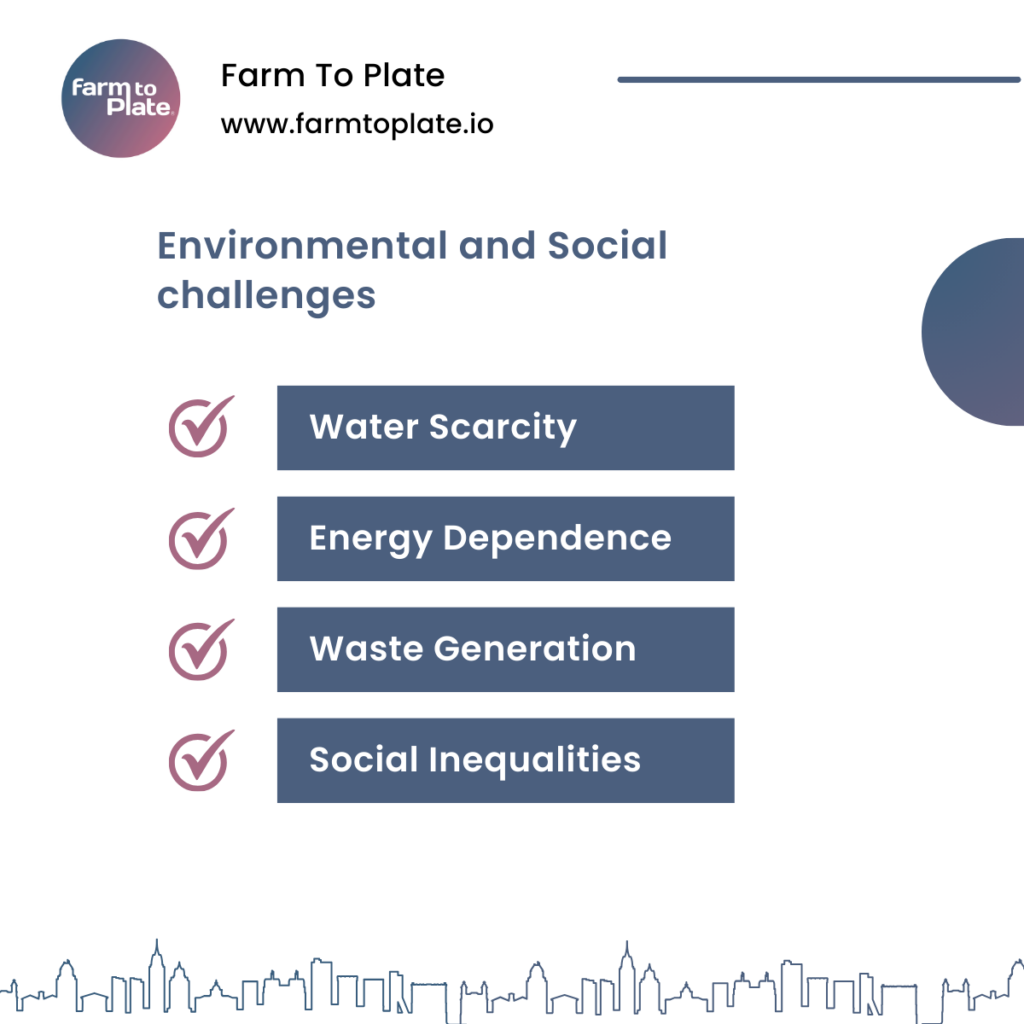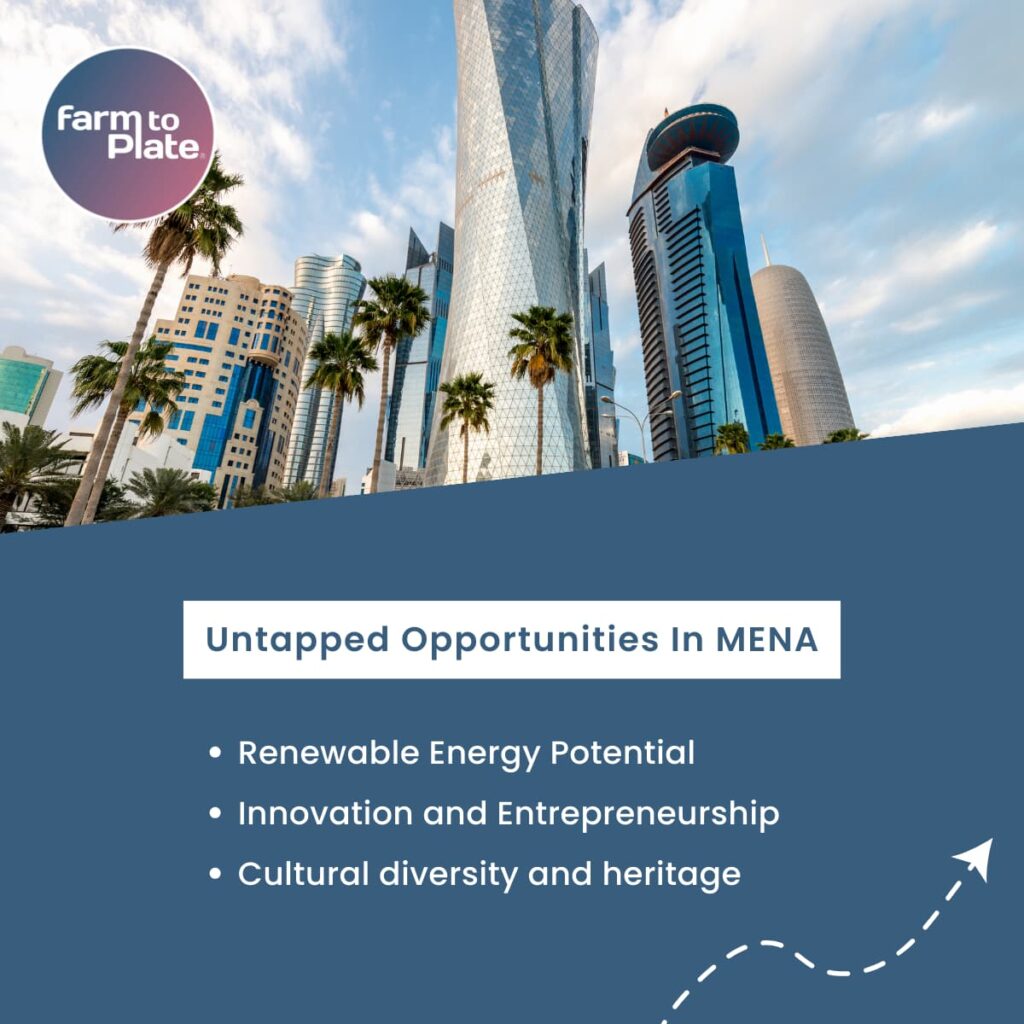Picture yourself as a farmer in the MENA region, cultivating fresh fruits and vegetables for your domestic market. You do not want to produce too little which will fail to satisfy the needs of your customers. Neither would you like to produce so much that it becomes a waste. You also want to conserve water and energy, minimizing your footprint. How do you manage to attain this balance? The answer is demand forecasting.
Demand forecasting is an estimation of the demand for goods and services in the future based on past data, and market trends among other factors. It is an essential instrument for businesses and governments to make informed decisions on resource allocation. However, did you know that demand forecasting can also contribute to sustainability? In this blog, we will look at how demand forecasting can enable the MENA region to reach its sustainable living objectives and overcome some of these challenges.
Why is Sustainable Living Significant for the MENA Region?

The Middle East and North Africa, also known as the MENA region make up about 6% of the world’s population with a diverse culture. However, the region also faces some serious environmental and social challenges, such as:
● Water scarcity
The MENA region is the lowest in per capita freshwater availability, and by 2025 it is likely to be under severe water stress. Food safety, human health and economic development are under threat due to water scarcity.
● Energy dependence
The MENA region is one of the most energy-dependent regions in the world, relying on fossil fuels for nearly all its needs, and among those with highest per capita emissions. The area also has a lot of power blackouts and high energy costs which have an impact on the quality of life as well as business activities.
● Waste generation
The MENA region generates more than 150 million tons of municipal solid waste annually and recycles only about 10% of it. The remainder finds its way to landfills, dumps or the ocean leading to pollution and health risks as well as environmental degradation.
● Social inequality
The MENA region has a high level of income and gender inequality, is politically unstable, faces conflict and migration. These aspects destroy social harmony, human rights and economic prospects.
These challenges require immediate action to introduce more sustainable practices and policies in the MENA region. Luckily, the area also has some specific opportunities and strengths.
Untapped Opportunities in MENA

● Renewable energy potential
MENA has plenty of solar and wind resources that can be used to produce cheap renewable energy. The region has already made investments in various renewable energy projects like the Noor Ouarzazate solar complex of Morocco, the Shams 1 solar power plant of UAE, and Benban Solar Park Egypt.
● Innovation and entrepreneurship
The MENA region has an energetic population with a high educational level and digital literacy. The area has seen a spike in innovation and entrepreneurship more particularly, technology e-commerce social impact. Careem, Souq, Wuzzuf, and Nafham are some of the successful startups in this region.
● Cultural diversity and heritage
The MENA region is one of the richest and most complex cultures in terms of its history, art, science as well as trade. The area has different natural and cultural sites like the Pyramids of Giza, the Petra archaeological site as well as Dead Sea among others. The area can use its cultural resources to promote tourism, education, and intercultural exchange.
These opportunities and strengths can enable the MENA region to realize its sustainable living aspirations as well as build a more viable future.
How Does Demand Forecasting Help to Foster Sustainability in the MENA Region?
Demand forecasting can become a vital tool to promote sustainable living in the MENA region, helping businesses and governments make sound decisions based on accurate data. Here are some of the ways demand forecasting can contribute to sustainability in the region:
- Efficient resource allocation: Accurate demand forecasting is important for businesses and governments because it reduces the amount of waste that occurs when there are too many resources allocated to something, as well as predicts what will be needed in advance.
- Effective inventory management: Demand forecasting avoids overstock and understock, so that the product is available at all times, and there will be no wastage of goods hence customer satisfaction.
- Reduced transportation impact: Optimized shipping routes and modes reduce emissions, fuel consumption levels as well as transportation costs.
- Sustainable product promotion: Knowing customer needs helps companies concentrate on environmentally friendly products that have positive social and environmental impacts.
- Government planning and regulation: Demand forecasting is a source of information for infrastructure development, energy consumption, and waste management which in turn leads to sustainable practices as well as long-term quality of life.
How FarmtoPlate Can Help Achieve Sustainable Living Goals in MENA?
In the MENA region, it is crucial to work towards sustainable living goals in light of environmental challenges such as water scarcity, energy dependence, waste generation, and social inequality. Since FarmtoPlate aims to close the gap between farmers and consumers, its contribution to demand forecasting is essential for promoting sustainability.
- Efficient Resource Utilization
Using demand forecasting techniques, we can predict market demands accurately thus allowing the farmers to allocate resources efficiently. By only producing as much to satisfy market demands, farmers ensure that there is no wastage and preserve valuable resources such as water and energy. This efficient resource use is consistent with the objectives of sustainable living since it minimizes environmental impact.
- Minimization of Food Waste
Using demand forecasting, FarmtoPlate effectively manages inventory hence preventing overstock and understock of agricultural produce. Through the proper management of inventory, farmers can reduce food wastage and ensure that products are available when required thus minimizing waste in the supply chain.
- Reduced Environmental Footprint
With the help of demand forecasts, we optimize transportation routes and modes to minimize emissions and fuel consumption in agricultural logistics. This minimization of the ecological footprint in transporting supports sustainable agricultural practices within MENA.
- Promotion of Sustainable Practices
Demand forecasting enables FarmtoPlate to identify and promote sustainable agricultural practices and products. Through the promotion of sustainable farming practices and by supporting sales of such products, it also helps us to develop a more ecologically friendly agricultural sector in MENA.
- Government Policy Support
Our demand forecasting insights serve as valuable inputs for government planning and policy formulation. By providing data on market trends, resource utilization, and waste management, FarmtoPlate supports the development of policies aimed at promoting sustainable agriculture and fostering long-term environmental sustainability in the MENA region.
“I have personally managed the complexities of guaranteeing food security and sustainability. For instance: date farms that overflow with dates, waste and lose revenue due to unmet market demand. It is here that demand forecasting comes in and acts as a powerful tool to bridge the gap between farmers and consumers, efficient resource utilization, and reduce food wastage among others. It’s not only about dates – it is more about water management, renewable energy and finally building a better future for the prosperous MENA region.” Hussein Al Hussein (Farm To Plate, Regional Manager -MENA)
Conclusion
Demand forecasting is an effective tool that can help the MENA region achieve its sustainable living objectives and address some of the challenges it faces. Through demand forecasting, businesses and governments can maximize their use of resources by minimizing wastes as well as emissions hence promoting sustainable products and practices and encouraging innovation while at the same time planning on infrastructure development policies. Demand forecasting can also allow the MENA region to take advantage of its distinctive opportunities and strengths, including renewable energy potential, innovation and entrepreneurship; cultural diversity, or heritage. Demand forecasting can support the MENA region to build a better, more resilient, and sustainable future for its people and planet.
Tanya A Mishra, Technical Content Writer & Marketer at farmtoplate.io (specialising in MENA Tech Landscape). She has been working towards crafting insightful content on topics like Blockchain, Agritech, AI and many more.
